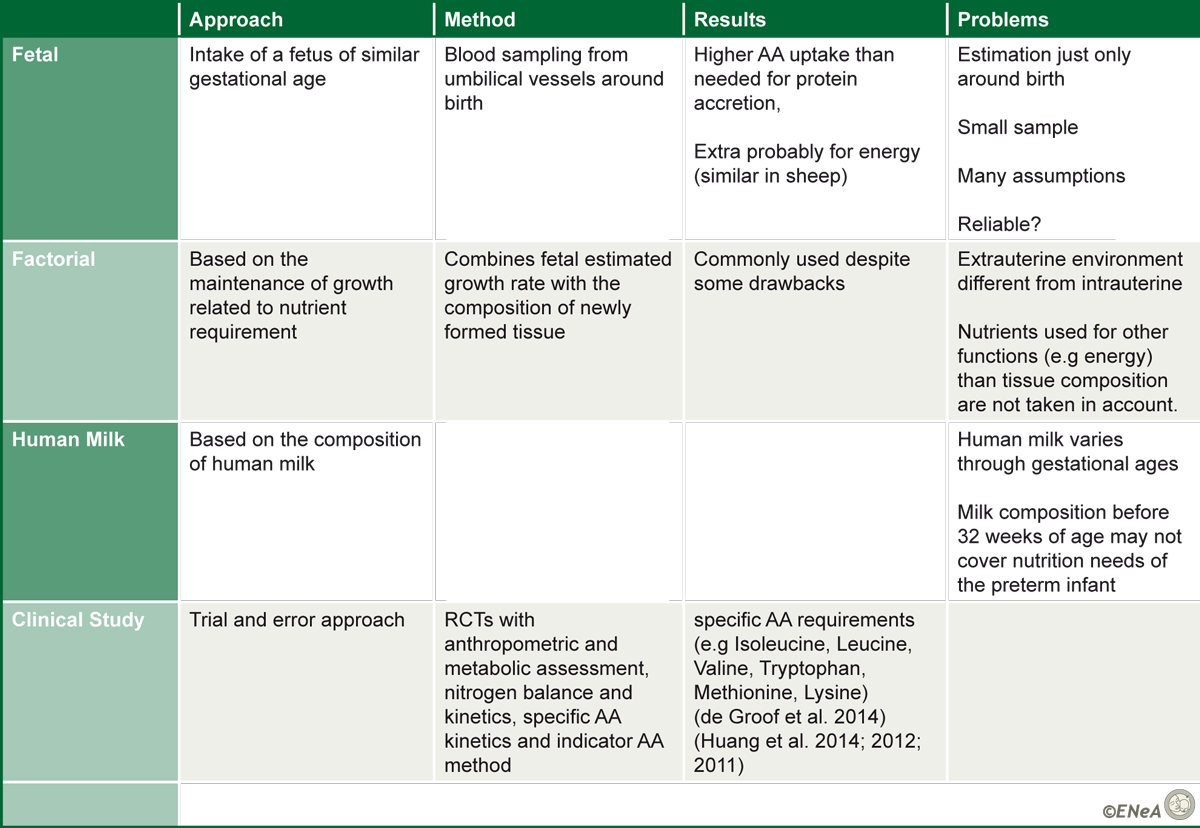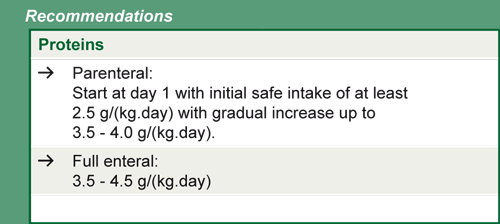Lesson 4: Amino Acids and Proteins
4.2. Amino Acid and Protein Requirements
Proteins are constantly being metabolized and synthesized. In neonates, the protein turnover is three times higher than in adults. Therefore, a higher energetic demand (per kcal/kg) in infants is seen compared to adults. Different organs in the neonate show different protein turnover. The high protein turnover in the gut, for example, means that the intestine is a very high metabolic active organ in this population (van Goudoever et al. 2014).
Protein digestion starts in the stomach, mediated by enzymes (gastric pepsins). In the duodenum, several proteases are released and they act together to further protein breakdown into amino acids, dipeptides and tripeptides. Following pancreatic enzyme digestion, peptides and free amino acids can be absorbed by the enterocyte.
As with energy requirements, estimating the ideal amino acid intakes for preterm infants is difficult. Different approaches have been developed to determine amino acid requirements for preterm infants and they are resumed in Table 3.
Table 3: Approaches to determine amino acid (AA) requirements for preterm infants.
Source: ENeA own; Data from van Goudoever et al. 2014
References:
de Groof et al. 2014
Huang et al. 2011
Huang et al. 2012
Huang et al. 2014
The "clinical study approach” has provided important insights into the protein and amino acid requirements of preterm infants. Provision of insufficient dietary amino acids leads to a catabolic state, with protein breakdown and net nitrogen loss, or a negative nitrogen balance. Clinically, this translates to extrauterine growth restriction (EUGR), also known as growth faltering, discussed in unit 1 of this module. To avoid negative nitrogen balance and support growth, amino acids should be started in preterm infants on the first day of life.
Provision of sufficient energy along with amino acid intake is necessary for the amino acids to be used to build lean body mass. Generally, recommendations are for 20-25 kcal non-protein energy/g protein (Embleton & Simmer 2014). While adequate supplies are important, oversupply is not desirable. Intakes above about 115-120 kcal/kg/day of energy and about 4 g/kg/day of protein seem to lead to fat deposition rather than increased lean body mass (Hay et al. 2014).
Depending on the degree of prematurity, the protein content of breast milk will usually not meet the nutritional needs of an enterally-fed preterm infant. Protein content of maternal milk decreases over time postpartum and is also highly variable among women. Please refer to ENeA Module 2: Breastfeeding and Module 3: Infant Formula Feeding for a discussion of the proteins in human milk and term infant formulas. Human milk fortifiers (HMF) are necessary for a preterm breast milk-fed infant to achieve normal growth rates and should be started once a preterm infant is consuming at least 50 ml/kg/day of milk. Fortifiers are discussed in unit 3 of this module.

